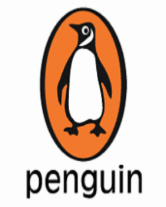Content Area Links to Literature
In addition to its more typical use in reading and the language arts, literature can be used as teaching material in the content areas of social studies, science, health, art, and math. Literature can bring content areas to life through well-illustrated and composedinformation books, and memorable characters and settings in picture-books and novels.
Social Studies
American readers are beginning to appreciate the contributions of diverse peoples to their nation and others through books thataddress omissions and distortions in history. For example, The Incas by Tim Wood enriches knowledge of this important indigenousgroup, which is often omitted in North American classrooms. Varied settings, such as Guatemala in the touching story of My Pig Amarillo bySatomi Ichikawa, can be linked to map work and geography skills.
Science
Books such as Te Amo, Sol/Te Amo, Luna; I Love You Sun/I Love You Moon by Karen Pandell can introduce basic physical science concepts (sun, moon, water, stars) in a natural and motivating way for both English and Spanish readers. Folk tales such as Nicholasa Mohr's The Song of el Coqui and Other Tales of Puerto Rico give insights into the flora and fauna of diverse regions like the Caribbeanwith text and illustrations that are well integrated. Mohr's tales also reflect socio-cultural information on the heritage of Puerto Ricans.
Health
The seven National Health Education standards blend well with critical literacy principles and reader-response techniques. Improvedcommunication across generations, genders, and races; facing emotional and educational challenges; and staying healthy despite peer pressure are central topics recommended for authentic discussions in the field of health education. Books like Crazy Loco by David Rice,An Island Like You: Stories of the Barrio and The Year of Our Revolution by Judith Ortiz-Cofer offer entry to discussionsthat can lead to health-enhancing behaviors. Go and Come Back by Joan Abelove could also be used to compare nutritional traditions of the two distinct areas compared in the novel: New York and the Peruvian jungle.
Art
Besides examining the varied artistic styles and media used in picture-books, students can study specific artists using books such asFrida Kahlo: The Artist Who Painted Herself by Margaret Frith, which provides an interesting female figure in the international worldof art. It also suggests a model for meaningful reports on biographies for children. Tomie dePaola's The Legend of the IndianPaintbrush(La Leyenda del Pincel del Indio) can encourage young artists to follow their dreams and persevere with creativity. Niño'sMask by Jeanette Winter introduces the craft of mask carving within an interesting story.
Math
Marcos Counts by Tomie dePaola introduces children to the numbers 1 through 10, and Arrow to the Sun by Gerald McDermott usesbasic geometric shapes to illustrate a folk tale. Books such as these can serve as motivating introductions to math concepts forEnglish and Spanish speaking children.







